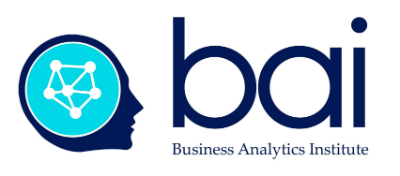What do managers need to know about data science?

The French publisher Ellipses contacted my colleague Farid Makhlouf and I recently to produce a university textbook on data science for business students. Because there are several valuable introductory texts to data science already on the market, we decided to address the more inclusive subject of Business Analytics. What do future managers need to understand about data, decision science and machine learning to add value to their organizations and their clients?
In our proposal, after defining business analytics, we offer to explore in successive chapters the importance of data, decision-making, problem solving, and evaluation. We then turn our attention to the impact of information technology through contributions on algorithms, software packages, machine learning, and big data. Each chapter will be illustrated with practical business problems, as well as exercises using simple programming routines. We conclude with a look at the individual skills, team competencies, and employment opportunities available today to students willing to invest in this area.
We suggest that business analytics is a mindset of looking at business and markets rather than a specialization. We believe that managers wishing to invest in analytics need to understand how the digital economy has influenced how organizations evaluate people, processes, and technology. The end goal of Business Analytics isn’t to introduce machine learning, but to improve how people take decisions.
As we’ve argued elsewhere, data isn’t just data. In modern economies, data is everywhere — we have produced more data in the last two years than in the history of mankind. Data is the lifeblood of the Fourth Industrial Revolution — advances in internet technologies and business analytics will be the new foundations of sustainable competitive advantage. If data alone has no value, business analytics is all producing value — using data to solve customer, organizational, and societal problems.
Human decision-making is at the heart of the digital economy. It’s not because we spend increasing amounts of time staring at our telephones and laptops that people don’t exist. It is useful to think of the Internet as a complex web of human interaction: we build websites, apps, and smart objects to capture the motivations and actions of our stakeholders. This information is represented as data in a variety of forms: quantitative, qualitative, discrete, categorical, etc. that can be potentially harnessed to improve managerial decision making.
Because people look at value from different angles, they don’t see data in the same light. Business Analytics is an attempt to understand perceptions of value along three axes: how do decision-makers use data to illustrate their challenges and opportunities, what types of proof do they use to qualify the problem, what forms of data will be used to judge success? Cognitive biases including anchoring, framing, and omission strongly influence how they will use the data at hand. Perceptions of risk, uncertainty, and ambiguity often hinder human decision-making.
The value of data is directly tied to its use in problem-solving. Exploring the decision environment can help us understand the nature of the challenges we face — are we working in a deterministic environment of perfect information, or a stochastic environment with missing pieces? Can we assume that the data at hand contains the desired outcome supervised learning) or not (unsupervised learning)? With what kind of data do you have to work (qualitative, quantitative, discrete, continuous, nominal, ordinal… …)? How much time should we spend finding the answer, and how good an answer is good enough ?
An algorithm is a set of rules for solving a problem in a finite number of steps. These rule sets take different names and forms depending on where they are applied. Intuition and logical reasoning are systems of organization used by individuals to solve problems. In teams and organizations, these procedures are often referred to as business processes where the steps are broken down into activities and tasks. In machine learning, algorithms refer to coding procedures and executables that reproduce human thought.
Data science software platforms identify hidden patterns in data and uses those patterns to make sophisticated predictions about the population under study. These machine learning tools typically obviate the programming aspect and provide user-friendly GUI (Graphical User Interface) so that managers with minimal knowledge of algorithms can use them to build predictive models. These software platforms allow managers to define, to optimize and to embed analytics in products and services, business processes, and the surrounding infrastructure.
Big data is a term for sets that are so large or complex that traditional software is unable to handle them. Big data analytics is the process of collecting, organizing, and analyzing these large data sets to discover patterns and other useful information. Big Data is neither a subject nor a language that can learned in a classroom, it’s a combination of programming knowledge, analytical skills and practices developed in specific business contexts. As management decision making becomes both more complex and costly, the Holy Grail of big data has become better, faster decisions.
We will conclude our work in pointing out current consulting and employment opportunities in Business Analytics. We will argue that these positions extend far beyond the title of “data scientist” to the core of strategic and operational management in commerce, industry, and public service. We will try to demonstrate that the professional doesn’t work alone, but in a team and a community of practice of colleagues that bring together complementary skills, knowledge, and experience. We will underline that the textbook isn’t the definitive text on the subject, but a reminder that an analytical mind is the one tool that a manager needs to bring to work each day.
What subjects, cases, and exercises would you include in the textbook? What do business students need to know about data, decision science and machine learning today and in the foreseeable future?
_____________
Lee Schlenker is a Professor at ESC Pau, and a Principal in the Business Analytics Institute http://baieurope.com. His LinkedIn profile can be viewed at www.linkedin.com/in/leeschlenker. You can follow us on Twitter at https://twitter.com/DSign4Analytics

